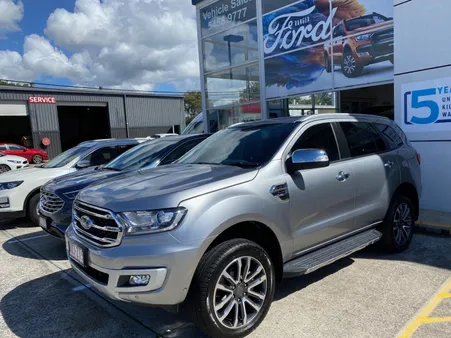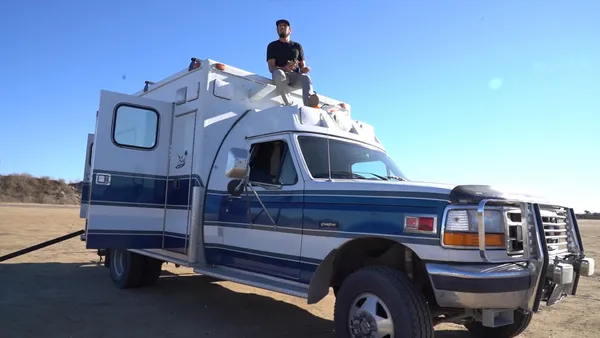Table of Contents
Welcome to Westernfordhcm, your ultimate guide to "Maintenance Costs and Budgeting for Ford Everest Ownership." Owning a Ford Everest is an excellent investment, but it's crucial to understand the maintenance costs involved to keep your vehicle running smoothly. This comprehensive guide will provide you with the necessary information to plan and budget effectively for your Ford Everest's maintenance needs, ensuring it remains in top condition and maximizing its performance.

Maintenance Costs and Budgeting for Ford Everest Ownership: A Comprehensive Guide
Maintenance Item | Estimated Cost | Frequency |
|---|---|---|
Oil Change | $50-$100 | Every 5,000-7,500 miles |
Tire Rotation | $20-$40 | Every 5,000-7,500 miles |
Brake Pad Replacement | $200-$400 | Every 30,000-50,000 miles |
Timing Belt Replacement | $500-$1,000 | Every 60,000-100,000 miles |
Transmission Fluid Change | $100-$200 | Every 30,000-60,000 miles |
I. Maintenance Costs and Budgeting for Ford Everest Ownership
Understanding Maintenance Costs
Regular maintenance is crucial for keeping your Ford Everest in optimal condition. Unexpected repairs can be costly, so it's essential to understand the typical maintenance costs associated with this vehicle. Factors influencing maintenance costs include the mileage, driving habits, and the specific trim level of your Everest. Nevertheless, having a solid understanding of these expenses will help you budget effectively for your Everest's upkeep.
Here are some estimated costs for common maintenance items:
Maintenance Item | Estimated Cost | Frequency |
|---|---|---|
Oil Change | $50-$100 | Every 5,000-7,500 miles |
Tire Rotation | $20-$40 | Every 5,000-7,500 miles |
Brake Pad Replacement | $200-$400 | Every 30,000-50,000 miles |
Timing Belt Replacement | $500-$1,000 | Every 60,000-100,000 miles |
Transmission Fluid Change | $100-$200 | Every 30,000-60,000 miles |
Planning for Maintenance Expenses
Off-roading can be an exciting way to explore nature, but it can also put extra strain on your Everest. If you plan on tackling rugged terrain frequently, it's wise to budget for more frequent maintenance, such as suspension checks and tire replacements.
It's also important to consider the age of your Everest. As vehicles get older, they may require more frequent repairs and maintenance. If you're buying a used Everest, make sure to have it inspected by a qualified mechanic to assess its overall condition and identify any potential maintenance issues.
II. Understanding the Factors that Impact Maintenance Costs
Factors Influencing Maintenance Costs
- Vehicle Age: Older vehicles typically require more frequent and costly repairs.
- Mileage: Vehicles with higher mileage have experienced more wear and tear, leading to increased maintenance needs.
- Driving Habits: Aggressive driving, off-roading, and towing can put additional stress on vehicle components.
- Climate: Extreme temperatures, humidity, and road conditions can affect the longevity of certain components.
- Maintenance History: Regular maintenance can help prevent costly repairs in the future.
Additional Considerations
- Type of Vehicle: Luxury vehicles and high-performance cars often have more expensive maintenance costs.
- Availability of Parts: The availability and cost of replacement parts can impact maintenance expenses.
- Labor Rates: The cost of labor for repairs can vary depending on the location and mechanic's experience.
- Warranty Coverage: Extended warranties can provide peace of mind and reduce unexpected maintenance costs.

Understanding the Factors that Impact Maintenance Costs
III. Cost of Replacement Parts and Labor
Genuine Ford Parts vs. Aftermarket Parts
Genuine Ford parts are designed and manufactured specifically for your Ford Everest, ensuring a perfect fit and optimal performance. While they may cost more than aftermarket parts, they offer several advantages, including:
- Guaranteed compatibility and reliability
- Longer lifespan and durability
- Preservation of your vehicle's warranty
Aftermarket parts, on the other hand, are manufactured by third-party companies and may not be specifically designed for your Everest. While they can be more affordable, they may not offer the same level of quality and reliability as genuine Ford parts. It's important to weigh the pros and cons carefully before making a decision.
Labor Costs
The cost of labor for maintenance and repairs will vary depending on the complexity of the work and the location of your mechanic. It's always a good idea to get quotes from multiple mechanics before making a decision.
Here are some factors that can affect labor costs:
- Hourly rate of the mechanic
- Complexity of the repair
- Location of the mechanic
By understanding the costs associated with replacement parts and labor, you can make informed decisions about the maintenance and repairs of your Ford Everest.

Cost of Replacement Parts and Labor
IV. Finding Affordable Maintenance Services
Finding affordable maintenance services for your Ford Everest is crucial to keeping your vehicle in optimal condition without breaking the bank. Here are some tips to help you save money on maintenance:
- Shop around for quotes: Don't just go with the first mechanic you find. Get quotes from several different shops to compare prices and services.
- Use independent mechanics: Independent mechanics often charge less than dealerships for the same services.
- Do some of the work yourself: If you're handy, you can save money by doing some of the basic maintenance tasks yourself, such as changing your oil or replacing your air filter.
- Buy parts online: You can often find parts for your Ford Everest online for less than you would pay at a dealership or auto parts store.
- Take advantage of coupons and discounts: Many mechanics offer coupons and discounts on their services. Be sure to ask about these when you're scheduling your appointment.
By following these tips, you can find affordable maintenance services for your Ford Everest and keep your vehicle running smoothly for years to come.
Here are some additional resources that you may find helpful:
- Ford Everest Maintenance Checklist
- Best Accessories for Your Ford Everest
- Towing Capacity of the Ford Everest

Finding Affordable Maintenance Services
V. Extending the Longevity of Your Ford Everest
With proper care and maintenance, you can significantly extend the lifespan of your Ford Everest. In addition to regular servicing and replacing worn parts, there are additional measures you can take to enhance its longevity. Refer to our extensive maintenance checklist and consider these tips:
- Regularly inspect and clean the exterior of your Everest, including the paint, trim, and lights.
- Wash the underside of your Everest to remove accumulated dirt, salt, and debris that can cause corrosion.
- Apply a wax or sealant to the exterior to protect it from UV rays, water, and other elements.
- Inspect the tires regularly for wear and tear, and maintain proper tire pressure.
- Monitor the fluid levels in your Everest, including oil, coolant, brake fluid, and power steering fluid.
- Avoid overloading your Everest and respect its weight capacity limits.
- Follow the recommended maintenance schedule for your Everest as outlined in the owner's manual.
- Consider additional upgrades such as rustproofing, underbody skid plates, and upgraded suspension components to enhance durability.
By following these tips and prioritizing maintenance, you can help ensure that your Ford Everest remains in pristine condition for years to come.

Extending the Longevity of Your Ford Everest
VI. Conclusion
Maintaining a Ford Everest requires careful planning and budgeting. By understanding the maintenance costs, adhering to the recommended maintenance schedule, and implementing the budgeting tips discussed in this guide, you can ensure your Everest stays in top condition without straining your finances. Regular maintenance not only extends the vehicle's lifespan but also enhances its safety and performance. Remember, a well-maintained Ford Everest is a reliable companion that will provide you with countless adventures and peace of mind on every journey.